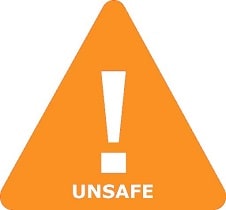Is EINECS 259-474-4 Safe in Breastfeeding
Question
I am a breastfeeding mother and i want to know if it is safe to use EINECS 259-474-4? Is EINECS 259-474-4 safe for nursing mother and child? Does EINECS 259-474-4 extracts into breast milk? Does EINECS 259-474-4 has any long term or short term side effects on infants? Can EINECS 259-474-4 influence milk supply or can EINECS 259-474-4 decrease milk supply in lactating mothers?
EINECS 259-474-4 lactation summary

- DrLact safety Score for EINECS 259-474-4 is 5 out of 8 which is considered Unsafe as per our analyses.
- A safety Score of 5 indicates that usage of EINECS 259-474-4 may cause serious side effects in breastfed baby.
- Our study of different scientific research indicates that EINECS 259-474-4 may cause moderate to high side effects or may affect milk supply in lactating mother.
- Our suggestion is to use safer alternate options rather than using EINECS 259-474-4 .
- It is recommended to evaluate the advantage of not breastfeeding while using EINECS 259-474-4 Vs not using EINECS 259-474-4 And continue breastfeeding.
- While using EINECS 259-474-4 Its must to monitor child for possible reactions. It is also important to understand that side effects vary largely based on age of breastfed child and time of medication in addition to dosage.
- Score calculated using the DrLact safety Version 1.2 model, this score ranges from 0 to 8 and measures overall safety of drug in lactation. Scores are primarily calculated using publicly available case studies, research papers, other scientific journals and publically available data.
Answer by Dr. Ru: About EINECS 259-474-4 usage in lactation
Synthetic retinoid derivated from vitamin A. Despite a low amount secreted through the breast milk (<2% of the equivalent maternal dose), some authorities think that product's toxicity justifies to avoid it during breastfeeding. American Academy of Pediatrics: Maternal Medication Usually Compatible With Breastfeeding.
Answer by DrLact: About EINECS 259-474-4 usage in lactation
Limited information indicates that maternal doses of EINECS 259-474-4 of 0.65 mg/kg daily produce low levels in milk. Because there is no published experience with EINECS 259-474-4 during breastfeeding, opinions vary on the advisability of breastfeeding during EINECS 259-474-4 therapy.[1][2][3] Various topical agents that are less likely to be absorbed by the mother may be preferred during breastfeeding, especially while nursing a newborn or preterm infant. Only water-miscible cream or gel products should be applied to the breast because ointments may expose the infant to high levels of mineral paraffins via licking.[4]
EINECS 259-474-4 Possible Effects in Breastfeeding
A review of adverse reaction reports on retinoids causing a breast reaction submitted to a French pharmacovigilance center found 8 cases of gynecomastia was associated with EINECS 259-474-4 use.[5]
Alternate Drugs
Glycolic Acid(Safe)
Salicylic Acid(Safe)
Tazarotene(Low Risk)
Isotretinoin(Unsafe)
Acitretin(Unsafe)
Isotretinoin(Unsafe)
Acitretin(Unsafe)
